
- For PC
- For MAC
- For Linux
- OS: Windows 7 SP1/8/10 (64 bit)
- Processor: Dual-Core 2.2 GHz
- Memory: 4GB
- Video Card: DirectX 10.1 level video card: AMD Radeon 77XX / NVIDIA GeForce GTX 660. The minimum supported resolution for the game is 720p.
- Network: Broadband Internet connection
- Hard Drive: 17 GB
- OS: Windows 10/11 (64 bit)
- Processor: Intel Core i5 or Ryzen 5 3600 and better
- Memory: 16 GB and more
- Video Card: DirectX 11 level video card or higher and drivers: Nvidia GeForce 1060 and higher, Radeon RX 570 and higher
- Network: Broadband Internet connection
- Hard Drive: 95 GB
- OS: Mac OS Big Sur 11.0 or newer
- Processor: Core i5, minimum 2.2GHz (Intel Xeon is not supported)
- Memory: 6 GB
- Video Card: Intel Iris Pro 5200 (Mac), or analog from AMD/Nvidia for Mac. Minimum supported resolution for the game is 720p with Metal support.
- Network: Broadband Internet connection
- Hard Drive: 17 GB
- OS: Mac OS Big Sur 11.0 or newer
- Processor: Core i7 (Intel Xeon is not supported)
- Memory: 8 GB
- Video Card: Radeon Vega II or higher with Metal support.
- Network: Broadband Internet connection
- Hard Drive: 95 GB
- OS: Most modern 64bit Linux distributions
- Processor: Dual-Core 2.4 GHz
- Memory: 4 GB
- Video Card: NVIDIA 660 with latest proprietary drivers (not older than 6 months) / similar AMD with latest proprietary drivers (not older than 6 months; the minimum supported resolution for the game is 720p) with Vulkan support.
- Network: Broadband Internet connection
- Hard Drive: 17 GB
- OS: Ubuntu 20.04 64bit
- Processor: Intel Core i7
- Memory: 16 GB
- Video Card: NVIDIA 1060 with latest proprietary drivers (not older than 6 months) / similar AMD (Radeon RX 570) with latest proprietary drivers (not older than 6 months) with Vulkan support.
- Network: Broadband Internet connection
- Hard Drive: 95 GB
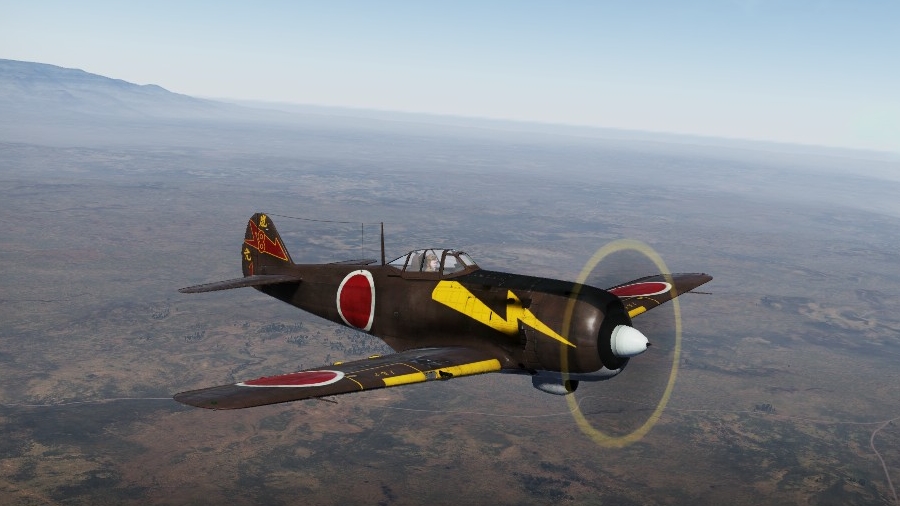 |
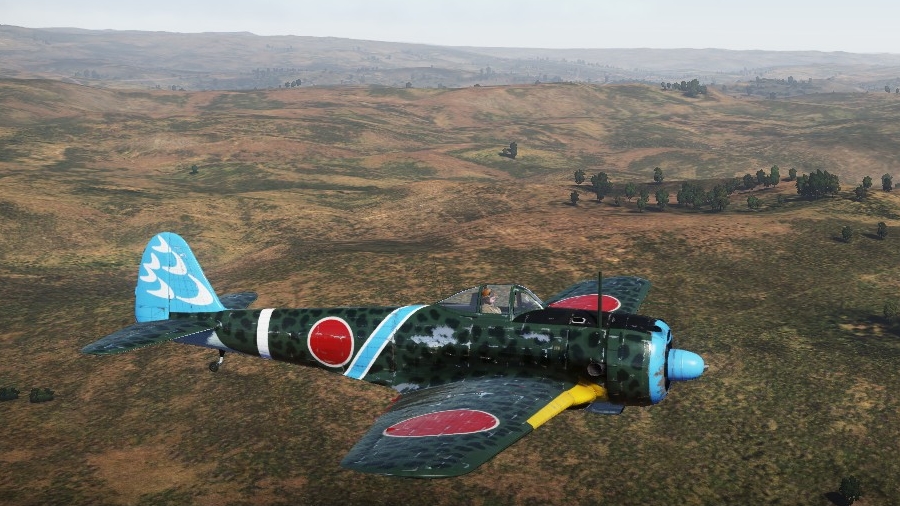 |
Ki-84 Ko of the 182nd Shimbu Tai, serial 8-1 Sick2day |
Ki-43 of the 248th Sentai, New Guinea, 1944 by Sick2day |
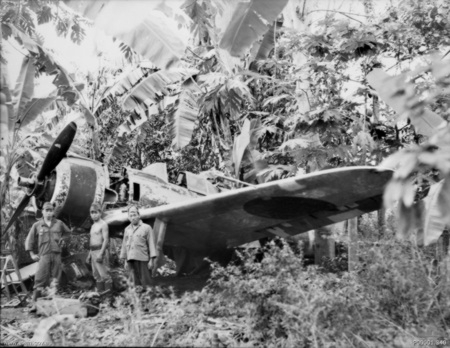 |
Ki-43 at Rabaul with ground crew |
Aviation in Japan in the 1930s and 1940s differed from many nations in that Japan did not possess an independent air force; like the United States, Japanese military aviation was split between the Imperial Japanese Army Air Force (IJAAF) and the Imperial Japanese Naval Air Force (IJNAF). Put in very basic terms, army aviation existed to support ground forces whilst naval aviation as in place to support the fleet, although operationally there was much more of a cross over between the two roles. Without an independent air force and with a limited budget for military aviation, a great rivalry grew between army and naval aviators in Japan.
In the late 1930s a period of restructuring saw large changes in the organization of the Imperial Japanese Army Air Force. The basic unit was the Hiko Sentai, normally shortened to Sentai (戦隊). This was derived from Hiko (飛行) meaning ‘air’ or ‘flying’, Sen meaning ‘war’ or ‘battle’ and Tai meaning ‘unit’ or ‘group’. In western terms, the Sentai was roughly equivalent to an Air Regiment and was normally commanded by a Major. The Sentai’s Commanding Officer carried a great deal of authority and could autonomously prescribe his unit’s organization and tactics and even the criteria for confirming victories; this led to a lack of standardization in many aspects of the IJAAF and furthermore makes post-war research problematic in some areas. At Sentai level the unit had approximately 320 repair and maintenance personnel which were divided and assigned to the next level of the organization and commanded by an engineering Lieutenant or Captain.
The next division was the Hiko Chutai; the word Chutai (中隊) had its origins as a cavalry term and was roughly equivalent to a squadron. Commanded by a Captain, the Chutai often operated as an independent unit from different locations to other squadrons within the Sentai, in a similar manner to Luftwaffe Gruppen.
Next was the Shotai, or Flight (小隊). The Chutai would typically be composed of three or four Shotai, each of three aircraft to give a total strength of 12-15 aircraft. Shotai leaders were junior officers such as Lieutenants or Senior NCOs such as Warrant Officers or Staff Sergeants. The second aircraft in each flight was ideally an experienced NCO whilst the third place would be reserved for a new or inexperienced pilot; an interesting point which separated the Japanese system to that of western air forces was that any pilot of sergeant rank or below was still considered to be under tuition.
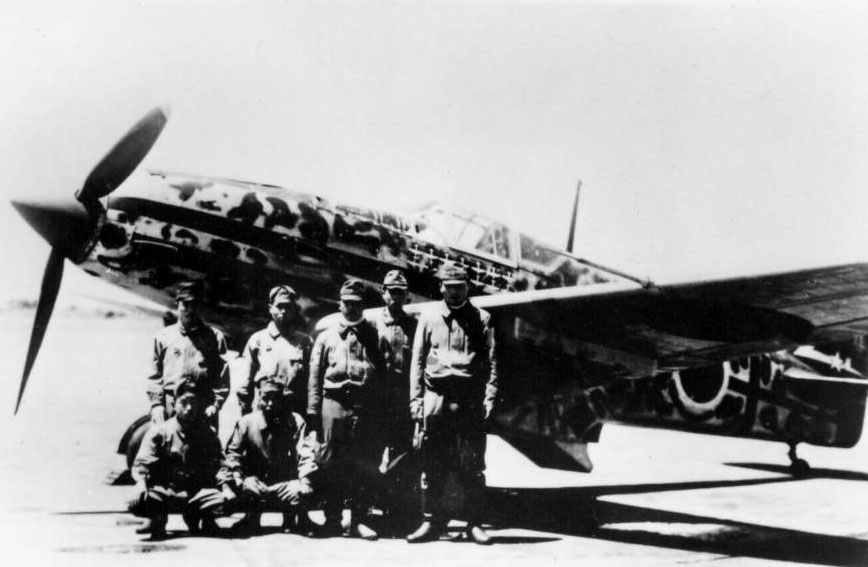 |
Ki-61 with Japanese army pilots |
Aside from the organization described above was the Sentai Hombu (本部); the Regimental HQ. The Major commanding the Sentai would often fly with one of the Chutai, but also would on occasion fly with his adjutant and an experienced NCO to form a separate Shotai. The Hombu HQ element also covered the fifty or so men who made up the supporting roles such as administration, intelligence, stores, signals and medical staff. This covered the regular units within the IJAAF but more specialized units such as reconnaissance or even some specialist fighter units were organized outside of the normal command structure: Dokuritsu Hiko Chutai were often accountable directly to Brigade, Division or even Air Army level.
In terms of the tactics used in air-to-air combat by fighter pilots of the Japanese army, Japan entered hostilities using a modification of the standard ‘vic’ used by many other nations. The three aircraft ‘vic’ was, however, a looser and more flexible formation than that of, for example, the RAF and also employed a height stagger between aircraft. The wingman in eschelon starboard was also nearly twice as far away from his leader as the wingman in eschelon port, spaced at some 50 and 30 metres respectively. This spacing allowed a quick and simple formation change to line astern if consecutive attack runs on a single target were required. The option of changing to line abreast to then initiate a scissor attack against faster moving targets was also viable. There were pros and cons to the rigidly drilled and practiced system of flying and fighting; pilots would become so accustomed to fighting alongside regular wingmen that verbal communications were rarely necessary; however, the close knit fraternity which developed could lead to promotions within a Sentai being based on comradeship rather than merit.
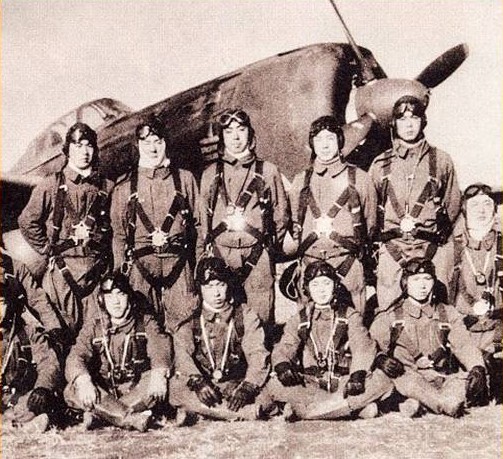 |
Ki-84 with aircrew |
Whilst the tried and tested three aircraft formation had proved its worth in the war torn skies over China the success of the four aircraft ‘Schwarm’ or ‘Finger Four’ was eventually adopted by the IJAAF, who even went as far as to adopt German terminology. However, old habits were to die-hard and once the system of energy fighting with two pairs broke up in combat it was often the case that pilots would fall back onto the old ways of maneuver dogfighting. This had been so successful in the early days of the Sino-Japanese conflict that doctrinally it was difficult to adapt and progress. Another reason which hindered the success of the change in tactics was experience; the initial plan was for both pairs within the schwarm to be led by experienced pilots, with more junior pilots as the wingmen. However, as the IJAAF suffered more casualties as the war progressed, more and more junior pilots with less training were given the responsibility of leading a rotte or pair, sometimes when the individual was not ready but there was no other option.
This account gives only a very brief and highly simplified description of both organization and tactics employed by certain elements of the IJAAF. In both cases there were large amounts of variation and a great deal of further information and considerations. The subject of Japanese military aviation history is a complex one requiring a very unique understanding and specialist knowledge; with this in mind the author wishes to express his most sincere thanks to aviation historian Nicholas Millman, without whose research and texts this article would not have been possible.
https://www.aviationofjapan.com
The author
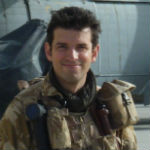 Mark Barber, War Thunder Historical Consultant
Mark Barber, War Thunder Historical Consultant
Mark Barber is a pilot in the British Royal Navy's Fleet Air Arm. His first book was published by Osprey Publishing in 2008; subsequently, he has written several more titles for Osprey and has also published articles for several magazines, including the UK's top selling aviation magazine 'FlyPast'. His main areas of interest are British Naval Aviation in the First and Second World Wars and RAF Fighter Command in the Second World War. He currently works with Gaijin Entertainment as a Historical Consultant, helping to run the Historical Section of the War Thunder forums and heading up the Ace of the Month series.



